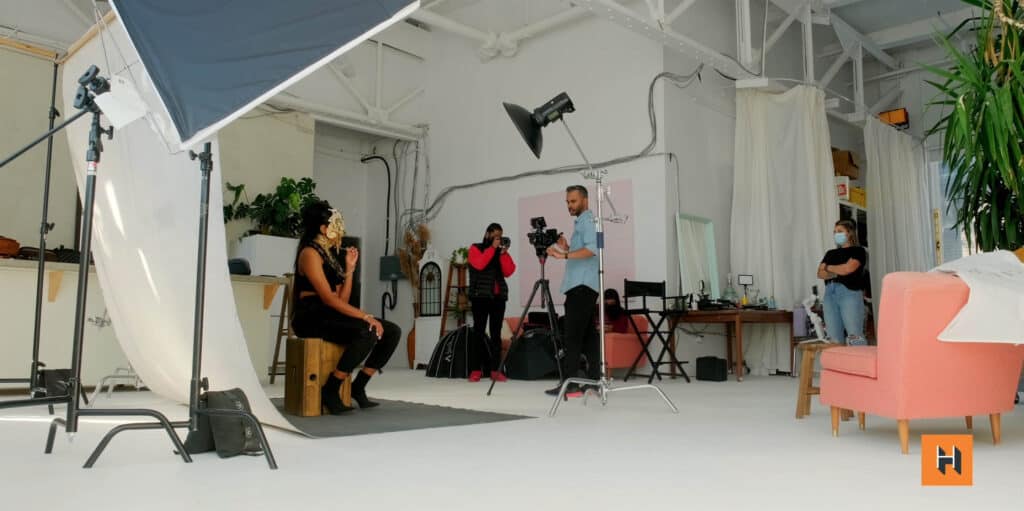Whether you’re just getting started or trying to make a name for yourself, you may have wondered how professionals go about planning out a photoshoot. Most of the work is done before you show up with your camera. We’re going to go through five of the most critical steps for planning out a successful photoshoot.

1. Put Your Inspiration in a Mood Board
It’s important to have a physical map of your creative concepts. The mood board helps to guide your production, so your entire team knows the style that you’re going after. Whether it’s PowerPoint, Keynote, Google Slides or something else entirely, find an easy way where you can pull inspirational images together that line up with your creative vision.
Having an idea for some key images is good but translating that to a team can be difficult without some visual context. That’s where the mood board comes in. It’s like a compass for your photoshoot, helping you navigate the types of poses, colour, texture and aesthetic you’re looking to achieve at your shoot. A mood board is not a recipe, however; the purpose of it is to serve as inspiration to iterate on.

2. Gather Your Support
It takes a village, and for your photoshoot you’ll need help. Assemble your contacts of trusted individuals who are passionate and dedicated to achieving your vision. Wherever you are on the journey, it’s important to accept that you can’t be an expert at everything.
Take a look at what the key roles are that can really elevate your photoshoot experience and assemble the right team piece by piece.
- A great model will save you time getting the compositions
- A great assistant can make sure you’re on schedule
- A make-up artist can save you hours in post-production
Having the right people around you makes the experience much more efficient and allows you to focus on the photography.

3. Create a Call Sheet
There are many ways to build a call sheet, but instead of finding the perfect way, find a way that works for you. Start to build a document that has ALL the critical details for your photoshoot. Things you want to include are:
- Date, time, location, parking, and weather
- Nearest hospital in case of any emergency
- Crew members
- Mood board
- Makeup and hair inspiration
- Posing guide
- Shot list
- And even a line-by-line timeline for the day with breaks
When you build an effective call sheet, your entire team will feel more confident in the production, and you’ll be less anxious on set. Take the time and build a call sheet, regardless of the size of your production, for flawless execution every time.

4. Create a Shot List
Once the call sheet is complete, it would be wise to create a shot list to determine the right gear needed for your shoot. Take some time to think about the compositions you’re hoping to capture and the lenses you’ll alternate through.
The Sigma 35mm F1.4 and 85mm F1.4 perspective lenses are staples, where they do most of the heavy lifting. Having a versatile zoom lens, like the Sigma 28-70mm F2.8 is a great backup especially when you’re looking to go beyond the shot list.
While it may seem a little silly, it’s one of the best things you can do in preparation for your next photoshoot. Think about the exact lenses you want to use and how you plan to move through them.

5. Review the Plan
The last item on the list is to review your plan on set regularly and build room for iteration. Go through the day and capture images and go back and review your mood board and call sheet.
See at how much difference there is between what you shot and the strategy you initially came up with. As you move through the schedule, try to find time to deviate a bit further and experiment on set. Ask your team if there’s any shot ideas and compositions that they see opportunity for. This is that ‘X’ factor that often gets forgotten because people may begin to panic.
Take your time and just refer to the plan that you laid out. It’s important not to ignore all your preparation when you’re finally behind the camera. This seems obvious, but you’d be surprised how many people make this mistake.
The goal is not to create a lot of pictures — it’s to create images that matter. With the right process, you can ensure this happens time and time again! Integrating and mastering these five tips can make a difference as you go down your photography journey.






